
|   |

|   |
 e-mail: ukb7@rediffmail.com Dance aesthetics - loukik and aloukik Photos: Amarendranatha Dutta January 14, 2022 Logic, both in the West and the East, seems to have thrived in terms of antonyms (rather than synonyms!) through the ages. Greek philosophy, right from the times of Immanuel Kant (18th century, critique of pure reason), Georg Wilhelm Hegel (19th century, German idealism) and Aristotle (ancient Greek philosopher), among whom Hegel had juxtaposed 'thesis' against 'anti-thesis' before reaching their apotheosis in 'syntheses'. When the time came to define 'inductive logic' and 'deductive logic', the former was clearly explained as the general premises from which the individual deductions could be made, while the latter would induce collecting evidence from all over, which would finally lead to the general inference. 'Symbolic logic' provided the underpinning of whole tomes of quantified philosophy - to the great delight of Aldous Huxley and Bertrand Russell. Whew! Much, much earlier in the East, the Nyaya Sutras, ascribed to Aksapada Gautama, was the foundational text of the Indian Nyaya school of the ancient philosophy from the pre-Christian era. The text consists of five books, with two chapters in each book, with a cumulative total of 528 aphoristic sutras, about rules of reason, logic, epistemology and metaphysics. Notable for focusing on knowledge and logic, and making no mention of Vedic rituals, the first book is structured as a general introduction and various categories of knowledge. Book two is about pramana (epistemology). Book three is about prameya (the objects of knowledge), and the text discusses the nature of knowledge in the remaining books, setting the foundation for Nyaya tradition of the empirical theory of validity and truth, opposing uncritical appeals to intuition or scriptural authority. The Nyaya Sutras cover a wide range of topics, including Tarka-Vidya (the science of debate) or Vada-Vidya (the science of discussion), and epistemological and metaphysical systems right to the end of first Christian millennium. So, there you are! 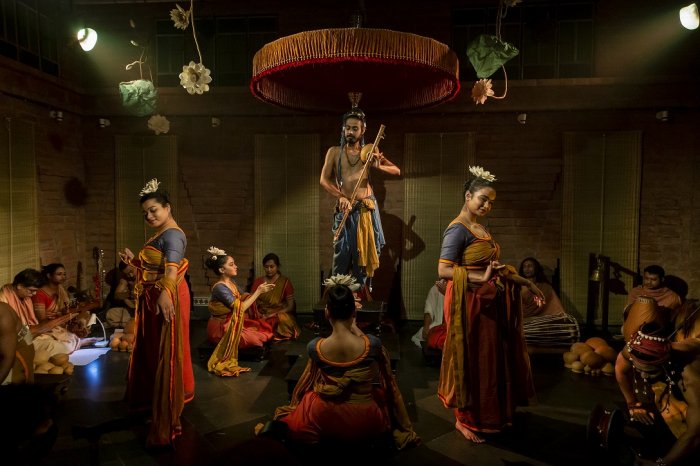 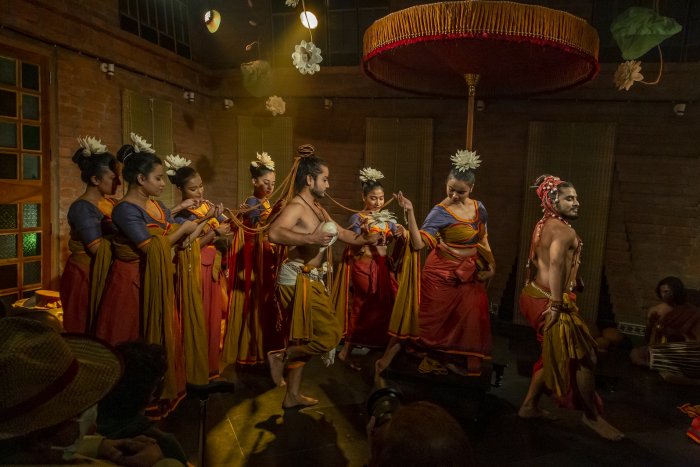 Mana, Pramana and Anumana (evaluation, verification and perception) presented by Chidakash Kalalaya Art space Spanda, on January 2 was squarely founded on the Nyaya Sutras as above. Directed (with costume and scenography) by the noted Natya Shastra scholar Piyal Bhattachaya, his very unique Marga Nritya remained a visual delight. Their brand new stage was a work of aesthetics and did full justice to their span of imagination. This critic would leave the abstract theme and its visualisation to the following questions and detailed response provided by the director, except just pointing out that the Nyaya Sutras seem to have no truck with the Vedic literature and to that extent, the invocation of the Vedic Rudra and other deities was open to the critique of the cognoscenti. This, again, does not take away the splendour and the opulence of the imaginative choreography. Could you narrate your choreographed story-line in simple terms? - Space in Indian worldview is determined as shunya or vacuum. The umbrella in the centre defines the Centrality of the Self, in philosophical terminology this is known as Bramhapura. The space outside the periphery of this umbrella reflects the materialistic viewpoint of the common man. - Masculine and feminine are the two-fold agency of this materialistic plane that propels itself in the discernment of this multi-layered assessment of one's origination. Both of these entities or energy is the two major classification of life on earth. When observed from the point of basic animalistic behaviour, the male entity is only concerned with the insemination but the woman is more concerned with the procreation and preservation of life. - Here, these two entities are envisioned in the garb of two commoners. The male entity amidst the drabness of his ordinary existence is a curious individual who embarks on the inward journey based on his realization of the three Purusha, either known as Brahma-Vishnu-Maheshwara, Brahma-Indra-Maheshwara or Brahma-Rudra-Maheshwara. - His consciousness has perceived their primordial pulse that gives the glimpse of primal state of universal creation. This conscious state of being is achieved under the umbrella, where he finds himself one with the ultimate unconditioned consciousness as achieved by the self-revelation of Buddha, Vyasdeva and other seekers in the past. - This non-dualistic state of consciousness helps to break his limited cast of individuality that in turn leads him towards the attainment of self-awakening. - Artistic pursuit becomes his means that frees him from the materialistic bindings of this secular world and brings him closer to Shiva or the unconditioned consciousness or the ultimate observer. 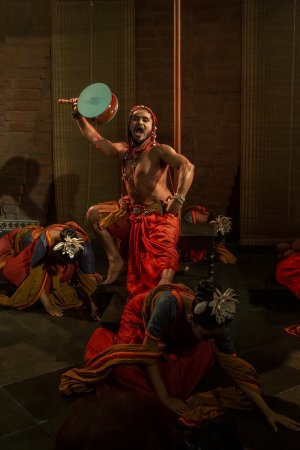 How do we relate your theme to the Nyaya Sastra? Kanada's Vaisheshika and Panini's Ashtadhyayi are the two basic fundamental philosophical concepts that are to be studied in the initial stage of any Indian philosophical pursuit. Hence, Nyaya Shastra provides the tools to analyze any concept logically and form opinions based on these logical deductions. The concept of Mana, Anumana and Pramana is borrowed from Nyaya Shastra, an important instrument to rationalize any kind of information or concept. Mana (evaluation) is regarded as the manner in which any entity or concept is quantified. Pramana (verification) is the method of substantiating any matter based on proof and evidence. Anumana (perception) is the part where any entity/object or concept can only be comprehended based on any idea, which may be due to any prior experience or indirect knowledge. How do you, again in simple terms, distinguish the empirical from the transcendental? In the Indian philosophy the concept of time can be both circular and linear in form. This difference in structure distinguishes the empirical from the transcendental. The circular is the form of time, which is repetitive in nature and is generally followed by the common mass but the linear time frame is followed by the Rishis and the Sages or the Seers. This linear time frame is perceived through the mindful observation. Could you describe the substance of your music? According to Natya Shastra, there are 7 Prachin Mahageeta and 7 Arvachin Mahageeta. The Prachin Mahageeta is only for singing whereas the Arvachin Mahageeta is for both singing and dancing purposes. Pashupati Parnika Geeta is one such Mahageeta. Along with this, there were Sadji Kapaal Geeta, Madhyama Kapaal Geeta and Asarita Vardhamana Geeta. This music is a reconstruction of Nanyadeva's Bharatabhashya, a 10th century music literature, based on the Natyashastra-ic principles, a part of my research-reconstruction project on musicology. 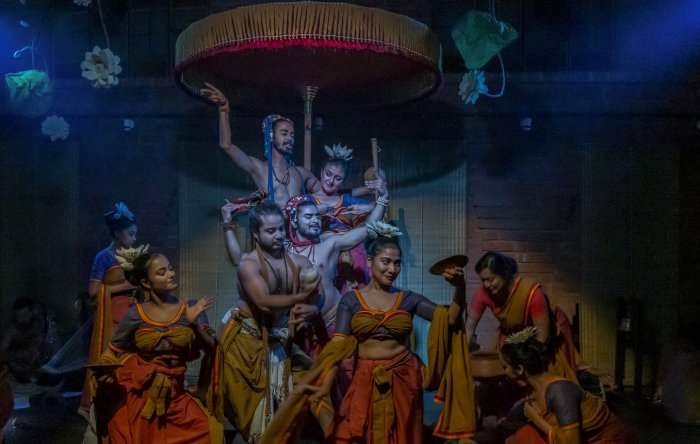 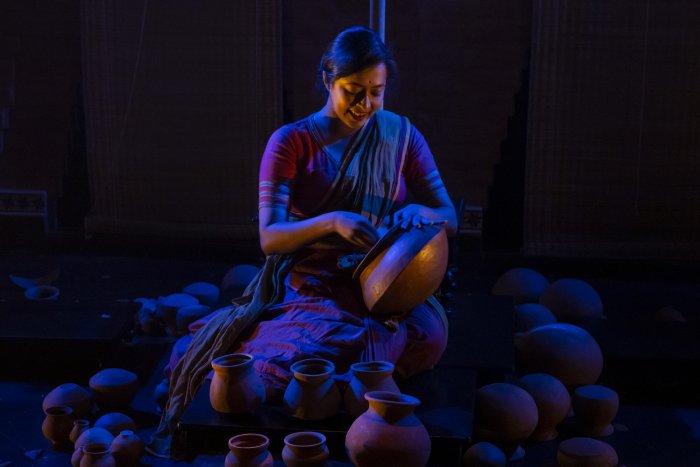 Various Veenas used by your musicians, seem to be exotic; could you give their origin and distinctive applications? Alavani Vina (Mono string Stick Zither): According to Bharata, this is known as the Ghosha Vina and Sarangadeva has mentioned this as the Alapani or Alavani Vina. This can be found in plenty in the sculptures of Belur, Halebidu temples and Badami Cave reliefs. A rudimentary form of this Vina is found to be in practice within the tribes of Jharkhand and Orissa, known as Tuhila. In the South-East Asian countries such as Cambodia and Thailand, this is known as Ksa Diev and Phin Pia, respectively. Mattakokila Vina: According to Bharata this is known as Vakra Vina and Sarangadeva mentioned this as Mattakokila Vina. This Vina is Septatonic in structure. A Buddhist form of this instrument can be found in Mayanmar, which is now known as the national instrument, Saung Gauk. Even at the cost of raising a controversy, do you expect your modern-day viewers to be conversant with your subject matter? As a creative person I have never considered this point to be one of the driving forces for my productions. This is because my reason to create or present has always been to impart knowledge and provide training to my students. I have never waited or longed for any kind of grant or public approval for any of my production and thus, I have never been bothered by any controversy or any kind of misunderstood notion regarding my creative pursuits.  Dr. Utpal K Banerjee is a scholar-commentator on performing arts over last four decades. He has authored 23 books on Indian art and culture, and 10 on Tagore studies. He served IGNCA as National Project Director, was a Tagore Research Scholar and is recipient of Padma Shri. Post your comments Pl provide your name and email id along with your comment. All appropriate comments posted with name and email id in the blog will also be featured in the site. |